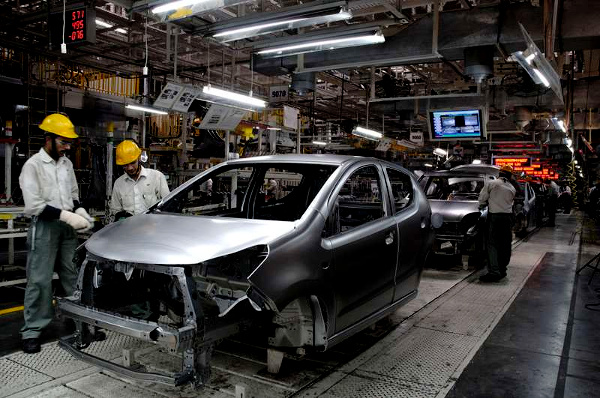India has displaced Germany as the world’s fourth-largest market for vehicle sales by volume and is on track to take the number three position from Japan within three years.
Commercial and passenger vehicle sales in India grew 8.3 per cent last year to 3.99m, overtaking the 3.74m of sales in Germany, a market that grew less than 1 per cent, according to data from LMC Automotive, a market intelligence provider.
McKinsey has projected that India is poised to overtake Japan as the third-biggest market by 2021, as the country of 1.2bn people grows more than 7 per cent a year, while Japan’s larger economy flatlines.
Basudeb Banerjee, an automotive analyst at Ambit Securities, said that despite the surging volumes in India, the low selling prices meant it was far from being one of the most lucrative markets for global carmakers.
The average selling price for passenger cars in India is about $7,000, Mr Banerjee estimated — roughly a third of the level in major developed markets.
Car sales volumes in India are still dwarfed by those of motorbikes and scooters, which are commonly used to transport goods and families, with sales of 20.2m units last year. But car sales were likely to continue growing at about 6-8 per cent a year, in line with broader economic growth, Mr Banerjee predicted.
German carmakers, which dominated China’s rapid growth as it rocketed to the world’s largest market over the past three decades, appear unprepared for the shifting landscape. With few entry-level offerings, their share in India’s fast-growing market is about 1 per cent, versus 69 per cent in its home market and 22 per cent in China, according to the German Association of the Automotive Industry.
Recommended
India’s car market has lots of capacity for further growth. Fitch estimated that car density — measured by the number of passenger cars per 1,000 people — was just 27 last year, versus 145 in China and 570 in Germany.
Affordability was the main reason car density it was so low, said Fitch analyst Anna-Marie Baisden.
“India has not really undergone the same kind of economic boom as China, which has created a consumer class ready to spend,” she said. “Buying a car is about either a first car or a move up from a motorcycle. We are not seeing as much ‘status symbol’ buying.”
She added there could be “enormous potential” once India built its middle class, but at present BMW, Mercedes and Audi are selling fewer than 20,000 cars a year, in a market of more than 3m.
Even the cheapest vehicles, however, are often prized by their owners as markers of upward mobility, something carmakers have been careful to reflect in their marketing. Nissan promotes its low-priced Datsun brand, for example, as the choice of “rising India”.
After Tata Motors’ high-profile Nano car proved an expensive flop, analysts blamed its failure to cast the vehicle in “aspirational” terms. Tata had billed the Nano as “the world’s cheapest car”, with a price tag of just Rs100,000 ($1,418).
A further hurdle faced by international carmakers seeking growth in India is the dominance of Maruti Suzuki, launched as a joint venture between Suzuki and the Indian government in 1982, which had a market share of 54 per cent in November. Maruti Suzuki’s market capitalisation currently stands at $31.3bn: $5.6bn more than that of its Japanese parent, which retains a 56 per cent stake.
Source: FT
Image Courtesy: Maruti Suzuki
You may also like
-
Trade Connect E-platform For Exports Is Single Window, Fast, Accessible And Transformational: Shri Piyush Goyal
-
Dot Simplifies Approval Processes For Telecom Licenses And Wireless Equipment
-
Coal Production and Supply Trends on Positive Trajectory
-
Union Minister To Release Booklets On Promotion Of Indigenous Species & Conservation Of States Fishes
-
2nd India-Japan Finance Dialogue held in Tokyo on 6th September, 2024
